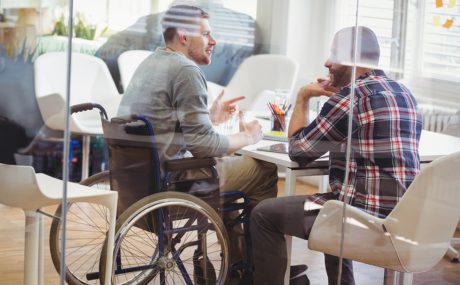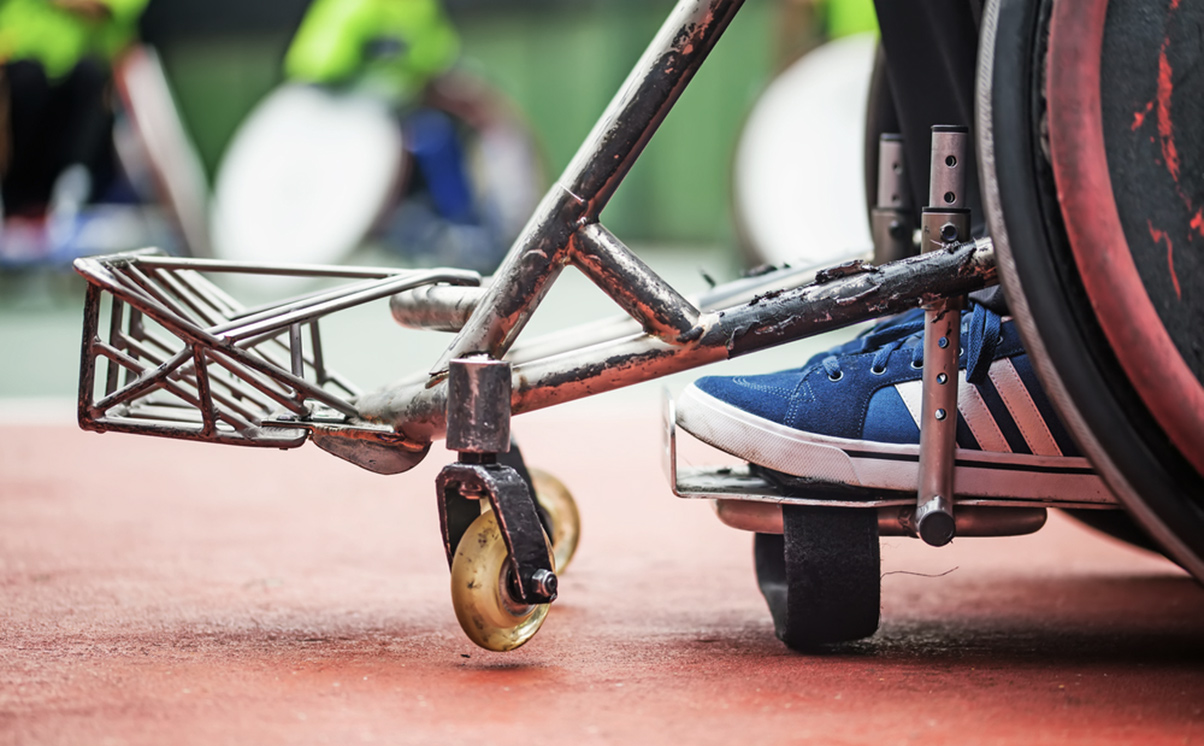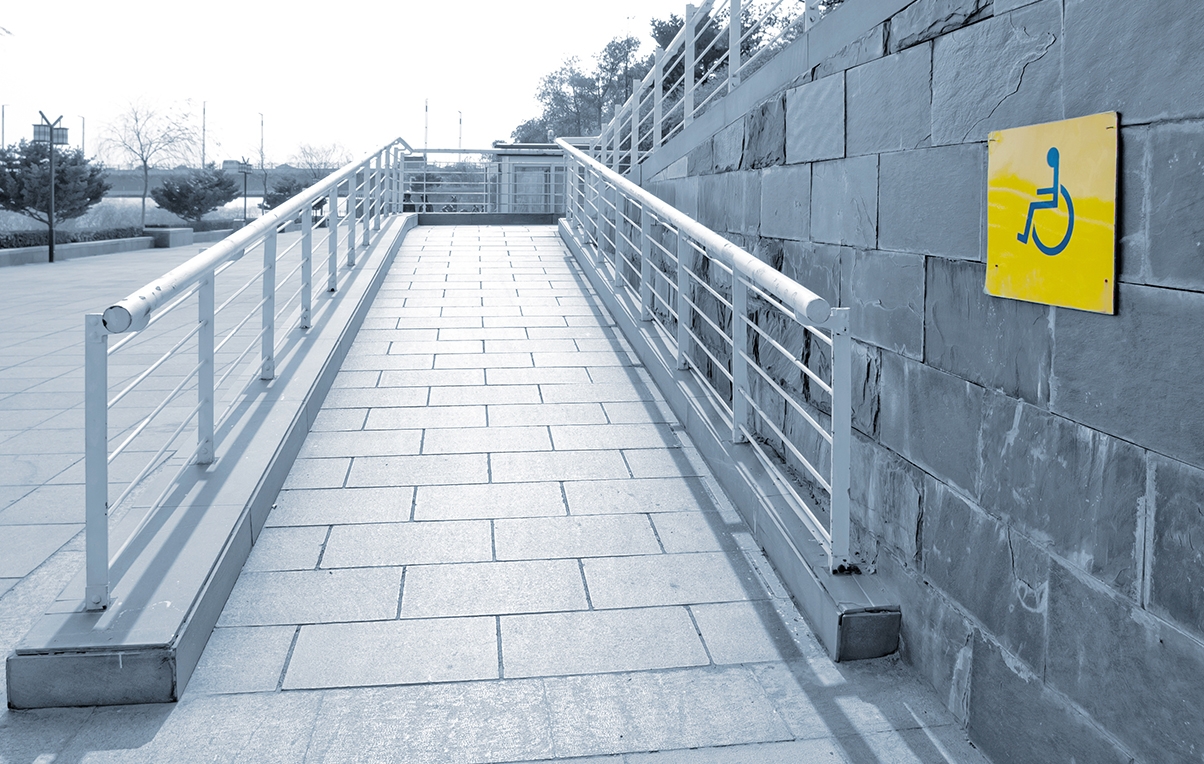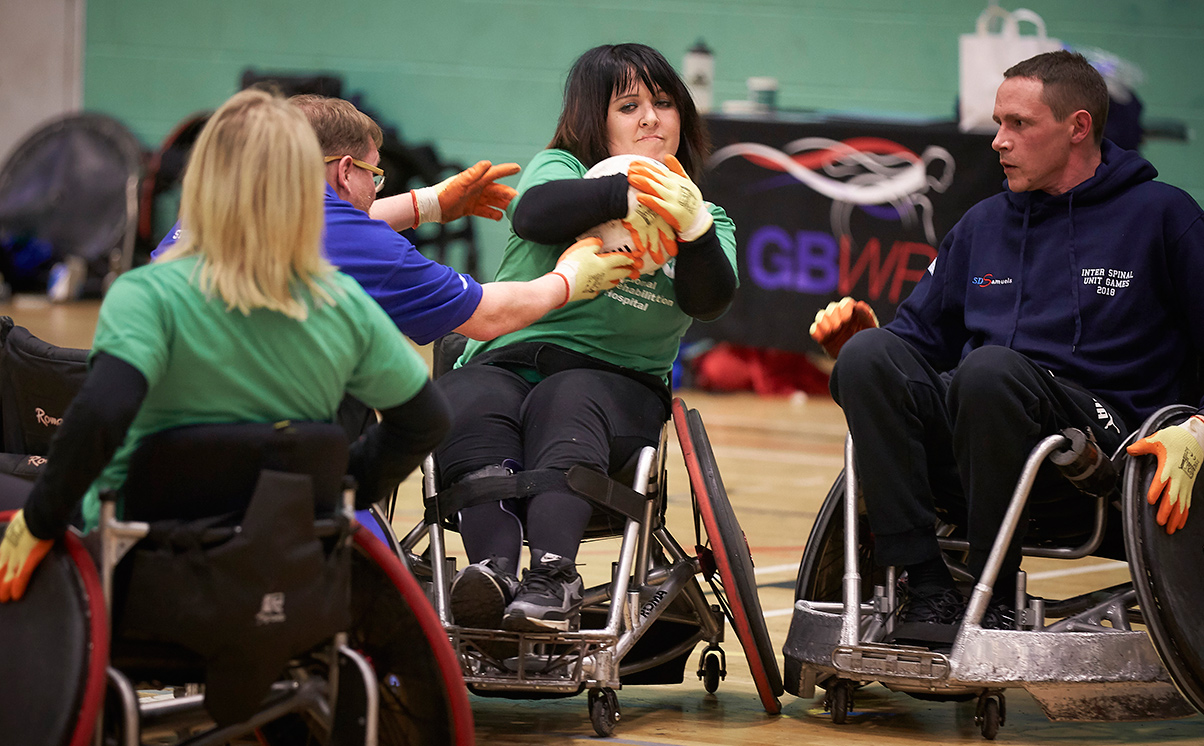At Stewarts, as specialists in spinal injuries, we are familiar with the need for the best possible wheelchair and the impact on daily life that this can have for our clients. At a recent training day for the lawyers in our injury teams, there was a presentation from Wheel of Health on the importance of good posture, especially for wheelchair users.
The emphasis is on achieving the best posture possible. When we sit up straight, our lung capacity is increased and we can breathe more easily and deeply; the right posture can even improve our cardio vascular systems. It can increase use of our arms and hands by placing the spine and shoulders in the optimum position.
The right wheelchair can reduce the risk of pressure sores even when the user is seated for long periods of time. For our spinally-injured clients, the right wheelchair and posture can have a meaningful impact on daily life. Mood and self-esteem are increased when the wheelchair user is able to sit up straight, able to lean forwards to engage with others and able to look people in the eye thus increasing social interaction. This in turn can reduce behavioural problems as it lessens frustration and feelings of isolation. Perhaps most importantly, the right wheelchair makes you see the user first, not the wheelchair.
What the right chair can do for you
- Flexible solutions versus chairs with a fixed mould
- At first glance, it may appear beneficial to have your wheelchair moulded to an exact fit of your back. However, our posture changes throughout the day and over time and it can be detrimental to be supported in one constant position.
- Improving condition
- We all have habits that are difficult to change. The same is true of posture. We adopt familiar (and often bad) posture out of habit and we may resist changes to that posture. It is therefore often impossible to place a spinally-injured client immediately into the most optimal position. It can be better to introduce a gradual change, supported by the chair. The focus should be on moving towards better support and a better posture. Over time, posture can be improved and deterioration can be avoided or minimised.
- Managing spasticity
- The right chair will move with you, not against you. Muscle spasticity, an involuntary contraction in the muscles and caused by damage to the brain or spinal cord, can present in any number of ways. A chair that is prepared for this and can move with the wheelchair user can prevent accidental self-harm and reduce pain. As some spasticity is thought to be related to stress, the right chair may also have the effect of reducing spasticity.
- Keep it under constant review
- Regular assessments and amendments to the chair are crucial to maintain a beneficial posture. Incremental changes should be made over time so that the best possible posture is preserved.
Good posture for all
Good posture is not limited to those who are wheelchair bound. We all spend increasing amounts of our day seated – we sit whilst commuting to and from work, we are seated most of the day at our desks or during meetings and we might sit and read a book or watch our favourite television programmes in the evenings to relax. Adopting the correct posture allows your body to sit comfortably in a supported position.
Postures to avoid:
Anterior pelvis tilt (tilting the pelvis forward). This creates an over-exaggerated ‘s’ shaped spine and is uncomfortable to maintain.
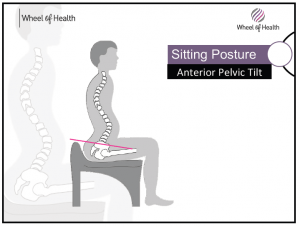
Posterior pelvic tilt (pelvis titled backwards, rounded back). This is often adopted by those sat in front the television in the evening. This might be comfortable for a short stretch of time (and when supported by cushions!) but this is not a comfortable position to remain in for long periods.
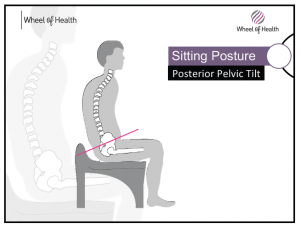
Pelvis obliquity (tilting the pelvis to one side or other). This results in a sideways ‘c’ shaped spine and, again, grows uncomfortable over time. The head wants to be over the pelvis so the body leans to counteract the tilt. If adopting a seated position, you may end up having to prop your head up with your hand.
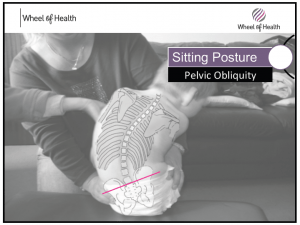
With all of the above poses, the spine will form an unnatural and often uncomfortable ‘s’ or ‘c’ shape as it tries to correct itself. Again, as your hour head wants to be directly above your pelvis you will find that stretching your torso in any direction will result in a bend in the spine.
Rather, we should aim for a position with a neutral pelvis. This creates a natural and comfortable ‘s’ shaped spine. Your body is supported and open but not stretched.
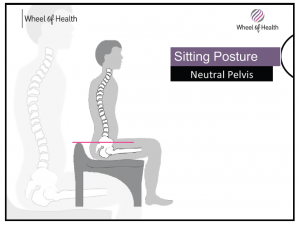
We all endeavour for a healthy body and mind and may spend time attending the gym or a yoga class to achieve this. In addition, we also need to be more mindful of our resting positions throughout the day. Challenge yourself today to sit in the right position and watch your breath and even your mood improve.
This article is a summary of a talk given by Wheel of Health. It does not constitute clinical advice and may be out of date by the time of reading. You should take appropriate clinical advice based on your individual circumstances.
You can find further information regarding our expertise, experience and team on our Personal Injury pages.
If you require assistance from our team, please contact us or alternatively request a call back from one of our lawyers by submitting this form.
Life beyond injury
We have teamed up with some clients who have catastrophic injuries to tell their stories of life beyond injury. Please visit our Life Beyond Injury webpage to see their stories.
We hope that by sharing these stories, newly injured people can see that with the right support they too can overcome adversity to lead full and active lives.
Please feel free to share our films. You can join in the conversation and share your stories of overcoming adversity to lead a fulfilling life beyond injury:
On Twitter, using the hashtag #lifebeyondinjury.
Or on Facebook, using the same #lifebeyondinjury hashtag.
Media contact: Lydia Buckingham, Senior Marketing Executive, +44 (0) 20 7822 8134, lbuckingham@stewartslaw.com

